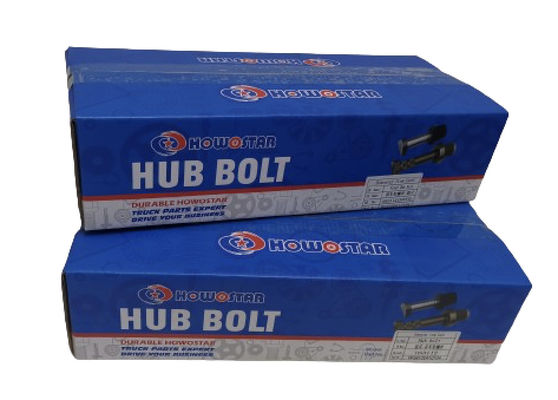-
Highlight
Shacman Truck Hub Bolt
,Truck Hub Bolt Replacement
,Trucks Hub Assembly Bolts
-
Place of OriginCHINA
-
Brand NameHOWOSTAR
-
Minimum Order Quantity1pc
-
Packaging DetailsPackages in Carton
-
Delivery Time5-7days
-
Payment TermsL/C, T/T, Western Union
-
Supply Ability100pcs per day
Shacman Truck Hub Bolt Replacement Trucks Hub Assembly Bolts
Shacman truck Hub bolt
Functions of the Truck Hub Bolt
-
Secure Wheel Attachment:
- The primary function of the hub bolt is to securely attach the wheel to the hub of the truck's axle. This connection is vital for maintaining the structural integrity of the wheel assembly during driving.
- The hub bolt is tightened to a specified torque, which creates a strong clamping force between the wheel and the hub, preventing the wheel from detaching during operation.
-
Load Distribution:
- The hub bolt distributes the load from the wheel and tire evenly across the hub surface. This helps to prevent localized stress concentrations that could lead to premature wear or failure of the hub or bolt.
- The number and arrangement of hub bolts (also known as lug nuts) are designed to optimize load distribution based on the weight and operating conditions of the truck.
-
Vibration Damping:
- The hub bolt also acts as a vibration damper, helping to absorb and dissipate any vibrations that may be transmitted from the road surface through the tire and wheel.
- This is important for maintaining the smooth running of the truck and reducing wear on the wheel bearings, seals, and other components.
-
Safety and Reliability:
- The hub bolt is a critical safety component, as a loose or failed bolt can lead to the wheel detaching from the vehicle, posing a significant risk to road safety.
- Regular inspection and maintenance of the hub bolts, including tightening to the recommended torque, are essential for maintaining the safety and reliability of the wheel assembly.
-
Adaptability and Compatibility:
- The hub bolt is designed to be compatible with the specific hub and wheel dimensions of the truck, ensuring a secure and stable connection.
- Different trucks and wheel assemblies may require different hub bolt sizes, threads, and materials, so it is important to use the correct bolts for each application.


